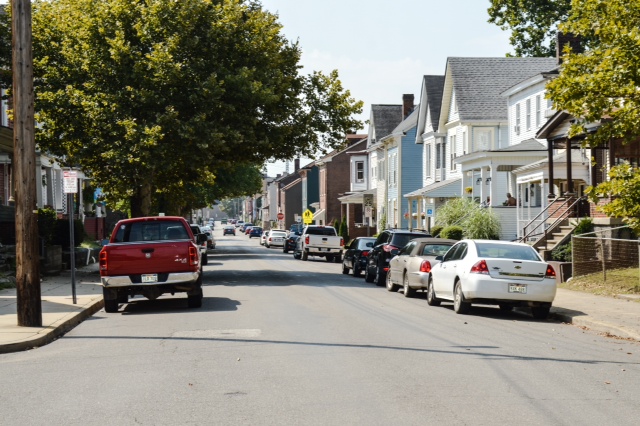By Steve Novotney
Weelunk.com
The need for new housing is at a crisis level in the Friendly City.
That’s the bad news.
The good news?
This crisis has been recognized by both government and the housing industry, and it is being addressed.
The city of Wheeling features thousands of large, Victorian-era residential structures, but many of them have been transitioned into multi-unit apartment complexes in the past two decades because housing needs in the Friendly City have changed in the past 30 years.
That is why Wheeling officials and local realtors started to study the housing predicament five years ago. “We have a lot of beautiful houses in Wheeling, but if that’s not what someone looking to move is looking for, they are going to look elsewhere,” explained Wheeling Mayor Andy McKenzie.
“We hear it a lot from people who have moved into the area for jobs at Orrick, Wiliams Lea, and a lot of other places. Our problem is that even though they work in Wheeling, they don’t live here and they are not on our tax rolls. So it’s something we have to address for the future.”
The city of Wheeling is 15 square miles in size and currently possesses 15,834 property parcels, 25 percent of which are situated in federally designated flood plains with portions of the downtown district, most of South Wheeling (921), and all of Wheeling Island (1,473) included. Also, there exists more than 200 abandoned structures within city limits and demolitions frequently take place.

“We have had meetings with local realtors on a frequent basis trying to find areas that can be developed,” said Wheeling City Manager Robert Herron. “Anything the city owns can be incentivized. When we own the property, we have the ability to negotiate the price of that property, and that is something we are very interested in doing.
“But there are not enough properties owned by the city to solve the housing issues we have,” he continued. “As far as vast stretches of property that could help offset that crisis is something we do not have.”
New housing has been proposed in the Elm Grove, Stacy’s Crossing, and South Wheeling sections, but these projects do not involve what many potential homeowners require. The Elm Grove proposal will include housing for senior citizens, and Herron said the South Wheeling project would help offset the rental property crunch. Stacy’s Crossing is subsidized housing.
“The project in South Wheeling will have 80 units on what was a baseball field, and those units will be for working people at a lower income level,” he said. “They will have to pay rent, and those units will also be an option for the people who have been displaced by the gas and oil workers. Those guys would not be able to go in there because they all make too much money.
“On the other end of the scale, we need housing prices between the $175,000 and $225,000 range,” Herron said. “We are constantly looking for areas for that new construction. We’re just not finding those areas right now.”
Currently, according to real estate agent Missy Ashmore of Kennan & Kennan, the average home sale price is $99,000, and the average listing price is $110,000. A total of 339 residential properties sold in Ohio County between Oct. 1, 2013 and Sept. 30, 2014.
Ashmore said a review of all sold homes by selling price reveals that the strongest price point is between $100,000-$200,000, followed closely by $50-$99,000.
“Our current demand for housing remains strong. With the lack of supply, housing in Ohio County is much like the game of musical chairs,” explained Ashmore. “You have to wait for someone to move to find your next home.
“Homes that are move-in ready sell faster and for more money. Buyers will discover that increasing their budget doesn’t necessarily ensure they get the updates they are hoping to find. Sadly, most of our inventory is over 75 years old and lacks the updates buyers are expecting,” she said. “Many suffer from functional obsolescence – only one bathroom, no closets, no air conditioning. We have seen a trend of people choosing to build over buy.”
Current demand, Ashmore said, is much different from the time when most of Wheeling’s residential neighborhoods were established. “If a builder were to come to our area and create the ideal neighborhood, it would be a walkable community, close to shopping, and one-floor-plan houses with two-car garages.
“Our Baby Boomer population is ready to downsize but not to condo living. They want to give up the maintenance of a large home, but they have very little options,” she continued. “Young professionals looking for upscale options are struggling to find homes, also. They are interested in living downtown, but currently few options exist.”
Finding a home in a preferred school area no longer is guaranteed, Ashmore said.
“Our student population is growing and they we can no longer assume you can go to any elementary school you wish,” she confirmed. “Due to class size limits, some children are being sent back to their former schools.”
Federal flood insurance laws and new FEMA mandates have impacted the value of hundreds of properties already, and the pace of re-sale has slowed.
“Adding $50 to $100 a month to a monthly mortgage payment for flood insurance, oftentimes makes the house no longer affordable,” Ashmore said. “But those home are selling.”
Downtown residential properties represent another factor under consideration by both the public and private sectors. Wheeling City Council members relaxed a long-standing ordinance that prohibited first-floor residential living in 2013, and the city manager reported interest that has been expressed in a couple of large downtown buildings.
“The Regional Economic Development Partnership is constantly working to attract those kinds of developments in the region, and there are discussions that could result in developments that increase the amount of people residing in the downtown,” Herron said. “There’s a good amount of people who live in the downtown or immediate area right now, so getting more should spark more of a reaction of the private sector.”
Several hilltop areas in Wheeling have been developed for housing, but a recent proposal involving private property located above Edgwood Street in the Woodsdale section provoked a negative reaction from current residents. GC&P Development, with owners Kevin Coyne and Doug Grayson, applied for a commercial zoning but was denied by the Wheeling Planning Commission in March 2013.
The developers, however, possess residential zoning and have continued lumbering and excavating the 90-acre property. “If someone came in and developed that hilltop for residential, I think that would be a positive,” the city manager said. “That is an area that could be used for housing.
“It is pretty expensive to develop properties with infrastructure costs and everything else that goes into it. It has to be competitive and within the market range, so those are the challenges faced by these kinds of developers.”
The city government’s efforts to locate new areas in which new housing could be constructed is, at times, dictated by history. For example, a hillside sitting east above Wheeling’s downtown is currently vacant land. The property, known officially as Wheeling Commons, once was occupied by public housing, but the structures have since been demolished. Soil conditions and usage requirements forbid the building of private housing.
“The soil conditions are very bad up there, and we know that because a few years ago there was an effort to develop that site after the buildings were demolished,” explained Herron. “The soil conditions put a stop to anything we thought might be possible.
“Another factor is that the city of Wheeling does not have the authority to sell that property unless we can go back and get permission from all of Betty Zane’s relatives who may still be alive,” he said. “We do have the ability to lease it, but there hasn’t been a lot of interest because of the soil conditions and because the city can’t sell it.”
Instead, the land will be utilized by Grow Ohio Valley, a new start-up company that plans to establish a teaching farm and an apple orchard on the land. The goal, Danny Swan said, is to produce enough apples to sell to local school systems and to instruct local resident on how to produce their own fruits and vegetables.
Without land on which to develop new housing, residential properties likely will continue increasing outside flood plains, Ashmore explained.
“As we move towards the future, locally we will see our home prices continue to climb until significant inventory is created. Renting will remain costly,” she said. “Many homes priced below $70,000 will be purchased for rentals, stealing the opportunity for first time home buyers to transition from renters to buyers.”
Downtown Wheeling, however, presents opportunity, she insisted. “Newcomer’s are less neighborhood centric. They fall in love with the character of the old buildings, and are less concerned if they are in East Wheeling versus South Wheeling,” said Ashmore. “They value being a bicycle ride to work and walking distance to restaurants and night life. They value affordable housing.
“It’s time,” she insisted, “to develop Wheeling’s downtown residential market.”




